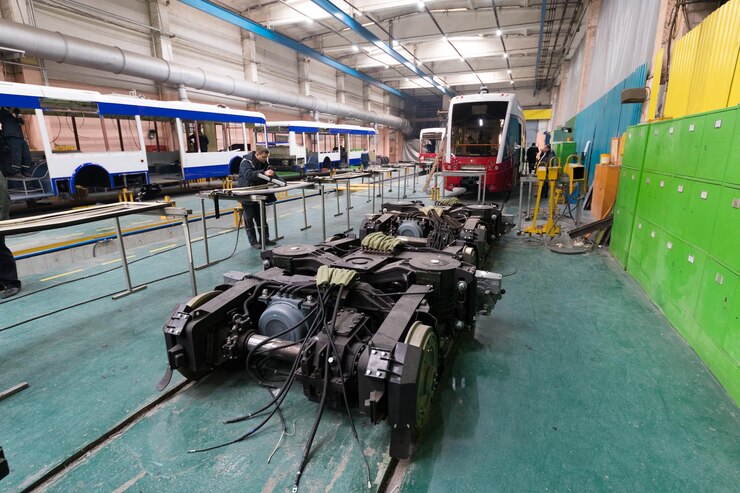The DIN 2129/2102-1 standards play a vital role in the industrial world, especially in applications that require precision, durability, and safety. In this comprehensive guide, we’ll dive into the specifics of the DIN 2129/2102-1 standards, focusing on flange dimensions, classifications, applications, and compliance. This article will serve as a practical resource for engineers, manufacturers, and anyone working with industrial piping systems.
Introduction
In the manufacturing and construction industries, adherence to standards like DIN 2129/2102-1 ensures uniformity and reliability. These standards specify dimensions and tolerances for flanges and pipe fittings, making them indispensable in high-stakes industrial settings. Proper application of these standards impacts pressure-bearing capacity, durability, and safety in various sectors, from oil and gas to wastewater management.
Understanding DIN 2129 and DIN 2102-1 Standards
DIN 2129 and DIN 2102-1 are part of the Deutsches Institut für Normung (DIN) standards, which are a series of German-engineered specifications widely respected in industrial manufacturing. The DIN 2129 standard covers the dimensions for circular flanges used in pipes, while DIN 2102-1 deals with tolerances for linear dimensions. Together, they guide the design and quality of flanges and fittings across industries.
Key Features of DIN 2129/2102-1 Standards
Importance of Standardized Flange Dimensions
In any industrial system where flanges are crucial, maintaining standardized dimensions guarantees compatibility and safety. DIN 2129 offers precise guidelines for flange sizes, which are essential to achieve uniformity in assembly, interchangeability of parts, and reliability in performance.
Tolerances as Defined by DIN 2102-1
The DIN 2102-1 standard is primarily concerned with the permissible tolerances for linear dimensions in pipe fittings. By defining strict limits on dimensional variations, DIN 2102-1 ensures the accuracy and efficiency of connections in high-pressure environments.
Materials Specifications for DIN 2129 Flanges
Materials specified in the DIN 2129 standard include carbon steel, stainless steel, and alloy steels, each suited for different environmental conditions and pressure levels. The choice of material impacts the flange’s corrosion resistance, temperature tolerance, and overall strength.
Classifications of Flanges Under DIN 2129/2102-1
Pressure Classes
DIN 2129 classifies flanges according to pressure classes, which range from PN 6 to PN 40, where “PN” stands for Nominal Pressure. These classifications denote the maximum operating pressure for which the flange is rated, allowing engineers to match the appropriate flange to the system’s requirements.
Types of Flanges
Common flange types under the DIN 2129 standard include:
- Weld neck flanges: Suitable for high-pressure applications.
- Slip-on flanges: Easier to install but suitable for lower pressures.
- Blind flanges: Used to seal off the ends of pipes.
- Threaded flanges: Ideal for situations where welding isn’t an option.
Applications of DIN 2129/2102-1 Standards
Oil and Gas Industry
In oil and gas, flanges and pipe fittings must withstand extreme pressures and temperatures. DIN 2129 flanges are designed to handle these demands, making them a staple in this industry.
Water Treatment and Waste Management
Water treatment plants rely on sturdy, corrosion-resistant flanges that can handle variable pressure levels. The DIN 2129/2102-1 standards provide a reliable framework for fittings used in these systems.
Chemical Processing
In chemical industries, where corrosive materials are often transported, flanges must offer high resistance to chemical reactions. Stainless steel flanges compliant with DIN standards are commonly used here for their resilience.
Benefits of Using DIN 2129/2102-1-Compliant Flanges
Enhanced Safety and Reliability
Complying with DIN 2129/2102-1 standards minimizes risks related to flange failure, leaks, and equipment malfunction, ensuring safer operations and reliable performance.
Cost-Effectiveness Through Compatibility
When systems are standardized, the need for custom parts is reduced, leading to cost savings and easier maintenance. DIN 2129/2102-1-compliant flanges fit seamlessly into pre-existing systems, reducing downtime and improving productivity.
FAQs
What industries commonly use DIN 2129 flanges? Industries such as oil and gas, chemical processing, and water treatment frequently use DIN 2129 flanges due to their durability and high-pressure tolerance.
How does DIN 2102-1 impact flange production? DIN 2102-1 specifies tolerances for flanges, ensuring consistent quality and dimensions in manufacturing processes.
Are DIN 2129 flanges compatible with ANSI standards? While some dimensions overlap, DIN and ANSI standards are not universally interchangeable, so it’s essential to verify compatibility.
Conclusion
The DIN 2129/2102-1 standards provide a solid foundation for reliable, efficient, and safe flange installations across a wide range of industries. Whether in oil and gas or wastewater management, adhering to these standards ensures longevity, safety, and performance. Following DIN standards not only enhances operational consistency but also offers peace of mind in systems where even minor variances can have significant consequences.
For anyone in industrial or engineering fields, understanding DIN 2129/2102-1 is an invaluable asset in ensuring high standards of quality and compliance.











